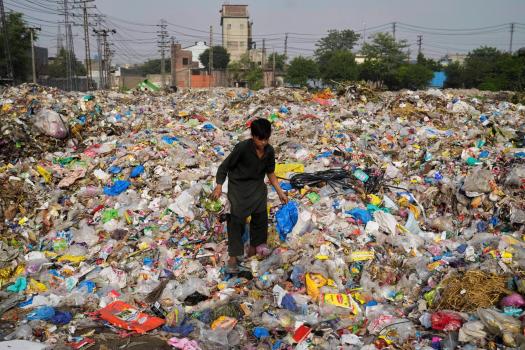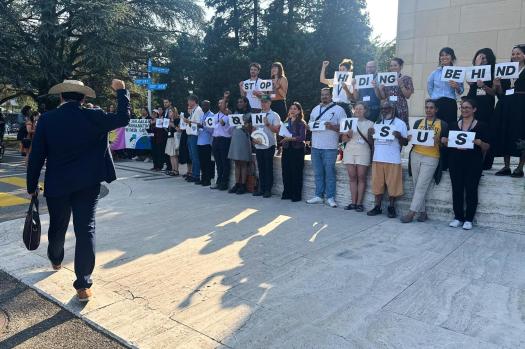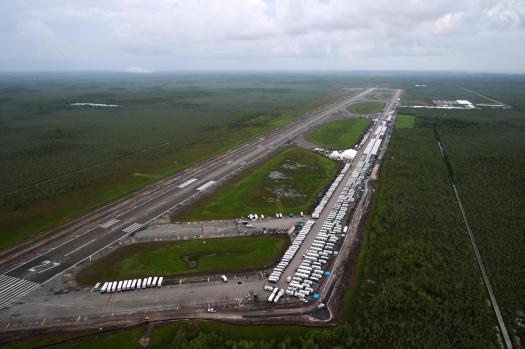By Associated Press’s Tammy Webber
Carbon dioxide is the main cause of global warming, and power stations and other industrial facilities are hoping Congress will maintain tax credits for capturing and storing the gas underground.
Many people believe that the method, known as carbon capture and sequestration, is a crucial means of lowering pollution while switching to renewable energy.
Environmentalists, however, contend that it has repeatedly fallen short of capturing as much pollution as promised and is only a means for producers of fossil fuels like coal, oil, and gas to continue using it, while some conservatives criticize it as being costly and unneeded.
A closer look is as follows:
Fossil fuel combustion produces the gas carbon dioxide. When discharged into the sky, it retains heat near the ground, increasing global temperatures for hundreds of years.
Before carbon dioxide exits the smokestack, it can be separated from other gases using equipment installed in power plants and industries. After that, the carbon is compressed and transported, typically via pipeline, to a deep underground injection site for long-term storage.
Giant vacuums can also be used to directly extract carbon from the atmosphere. After being caught, it is either confined by solid material or dissolved by chemicals.
The company injects carbon under high pressure, pushing it nearly two miles below the surface and into geological formations that may store it for thousands of years, according to Lauren Read, a senior vice president at BKV Corp., which constructed a carbon capture facility in Texas.
Both unmineable coal seams and deep saline or basalt rocks can store carbon. However, according to the U.S. Environmental Protection Agency and the International Energy Agency, roughly three-fourths of the carbon dioxide that is caught is injected back into oil fields to create pressure that aids in the extraction of harder-to-reach reserves, so it is not permanently retained.
About 60% of carbon dioxide emissions from manufacturing can be captured and stored by facilities using the most widely utilized technology. The IEA states that anything over that pace is far more costly and challenging.
According to Alexandra Shaykevich, research manager at the Environmental Integrity Project’s Oil & Gas Watch, while some businesses have predicted carbon capture rates of 90% or higher, in reality, that has never occurred.
According to Grant Hauber, a strategic adviser on energy and financial markets at the Institute for Energy Economics and Financial Analysis, this is because it is challenging to measure carbon dioxide emissions at every location.
Potential issues with keeping it in the ground are another point raised by environmentalists. For instance, the Illinois legislature this year banned carbon sequestration above or below the Mahomet Aquifer, a vital source of drinking water for approximately a million people, after the agribusiness company Archer-Daniels-Midland found a leak at its carbon capture and storage facility approximately a mile underground last year.
Many environmentalists argue that carbon capture is less beneficial when it expands the use of coal, oil, and gas, but it can assist reduce emissions from hard-to-abate industries like steel and cement.
According to a 2021 study, methane, a powerful greenhouse gas that absorbs more than 80 times as much heat but has a shorter half-life than carbon dioxide, is also released in considerable quantities during the carbon capture process. When the gas is taken to the surface and delivered to facilities, leaks cause that to occur.
An estimated 50 million metric tons of carbon dioxide were captured by 45 commercial carbon-capture plants last year, which is a very small portion of the 37.8 gigatonnes of carbon dioxide emissions from the energy sector alone, according to the IEA.
According to the most recent estimate from the European Commission’s Emissions Database for Global Atmospheric Research, it represents an even lower portion of worldwide greenhouse gas emissions, which totaled 53 gigatonnes for 2023.
According to the Institute for Energy Economics and Financial Analysis, ExxonMobil’s Shute Creek facility in Wyoming, one of the biggest carbon capture utilization and storage projects in the world, only captures roughly half of its carbon dioxide, with the majority being sold to oil and gas companies for re-use in oil fields.
Nevertheless, according to Sangeet Nepal, a technology specialist at the Carbon Capture Coalition, carbon capture is a crucial instrument for lowering carbon dioxide emissions, especially in heavy sectors.
Related Articles
-
Proposed Seminole toll road would cut through her dining room and his nursery
-
Tickled Pink: Flamingos on Merritt Island show birds are giving Florida a second chance
-
GOP plan to sell more than 2 million acres of federal lands is found to violate Senate rules
-
Is $32 too much for a Florida restaurant s grouper sandwich? Yes, says DeSantis
-
If Energy Star goes away, finding energy efficient appliances will be harder. Here are some tips
According to Nepal, it is merely a supplementary technology and not a replacement for renewable energy sources. It is a one component in the larger battle against climate change.
Proposed ammonia and hydrogen plants on the U.S. Gulf Coast are among the many projects that experts say are unlikely to be constructed without the tax credits, which, according to Jessie Stolark, executive director of the Carbon Capture Coalition, have already attracted a lot of investment and are essential to the United States’ ability to compete internationally.
Although another version passed the House, they are still included in the Senate Finance Committee’s draft reconciliation measure. However, the Carbon Capture Coalition claims that inflation has already reduced their value and may restrict projects.
This article was given by Jack Brook, a reporter for the Associated Press in New Orleans.
Several private foundations provide funding for the Associated Press’s coverage of the environment and climate. All content is the exclusive responsibility of AP. Visit AP.org to find funded coverage areas, a list of supporters, and AP rules for dealing with philanthropies.












